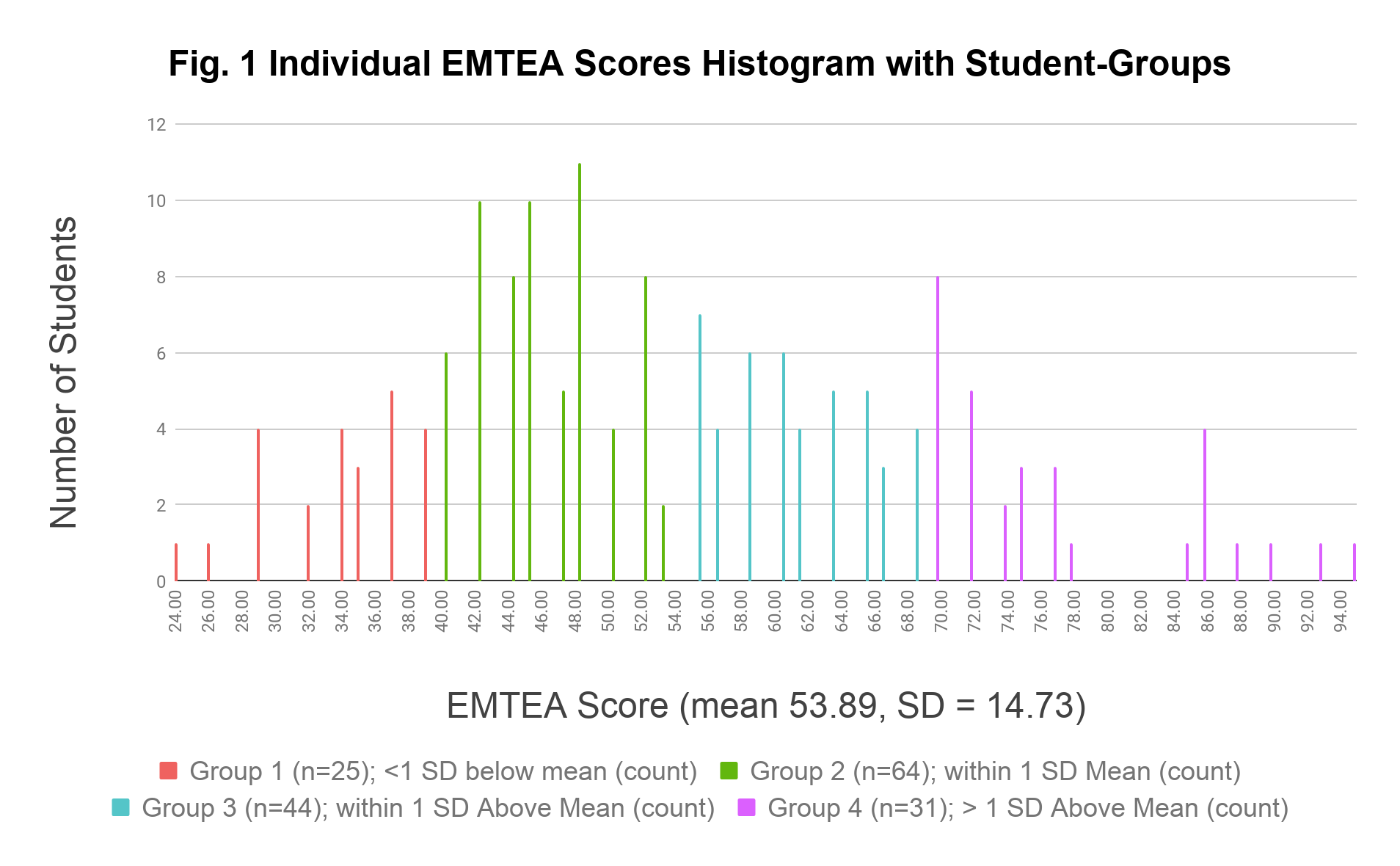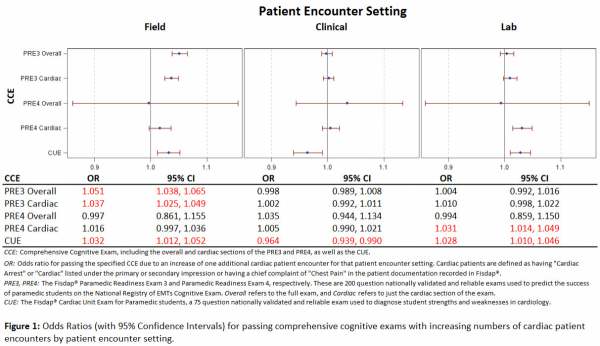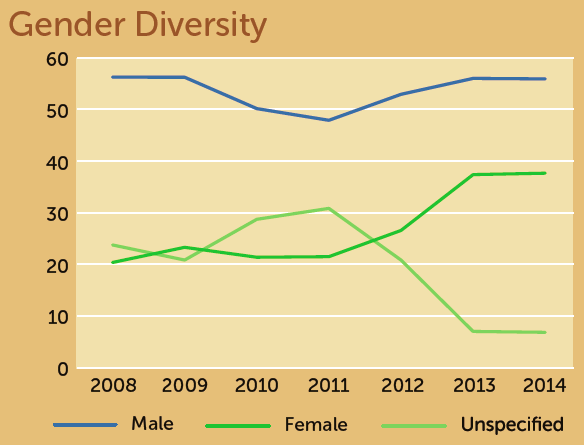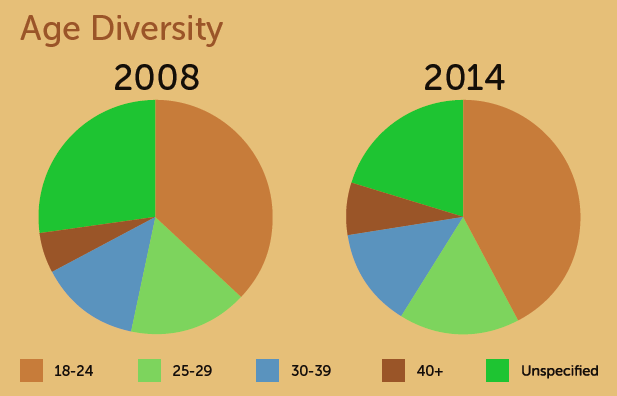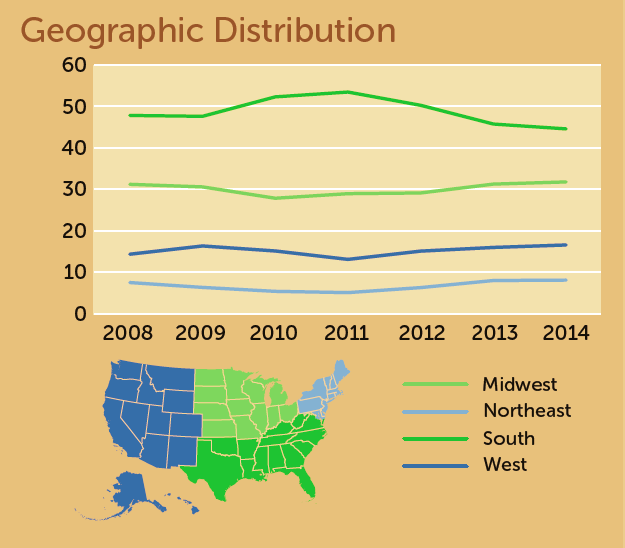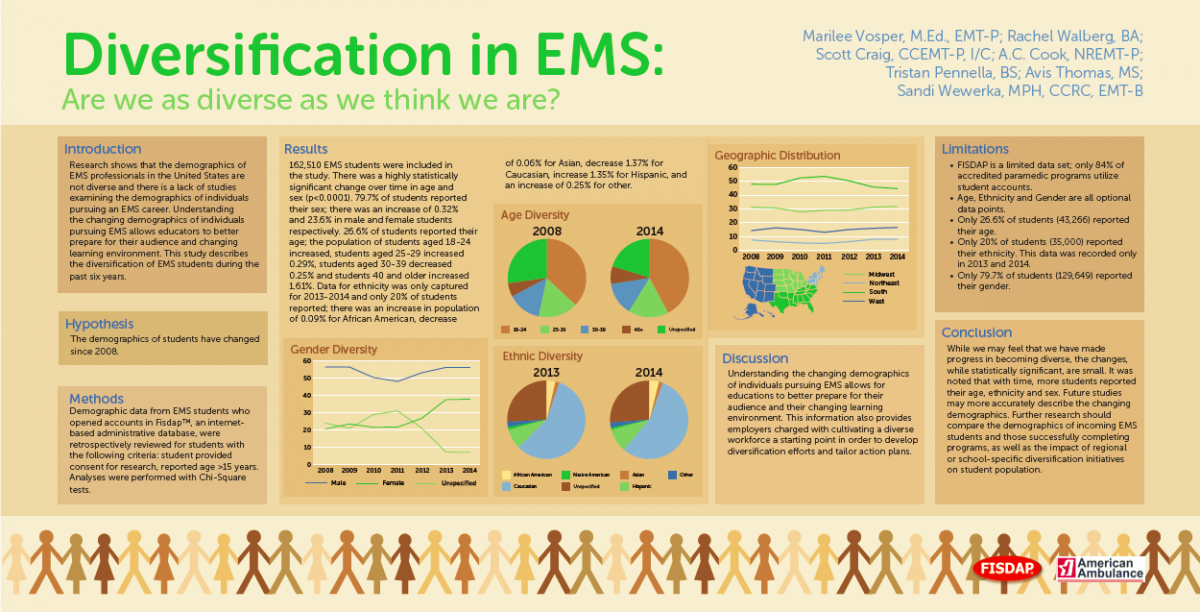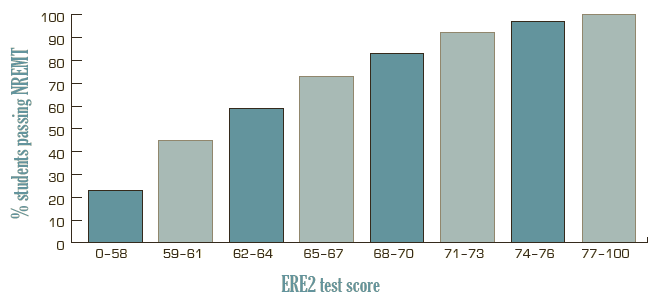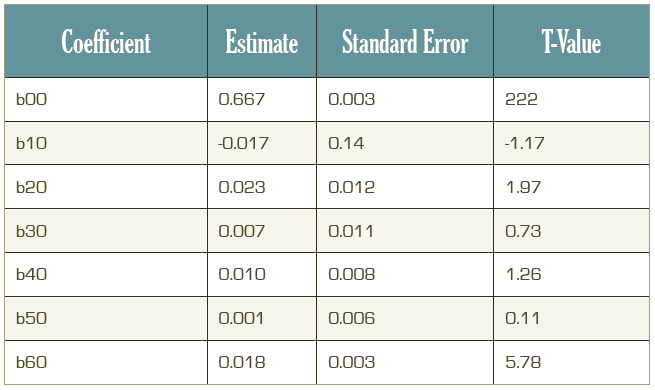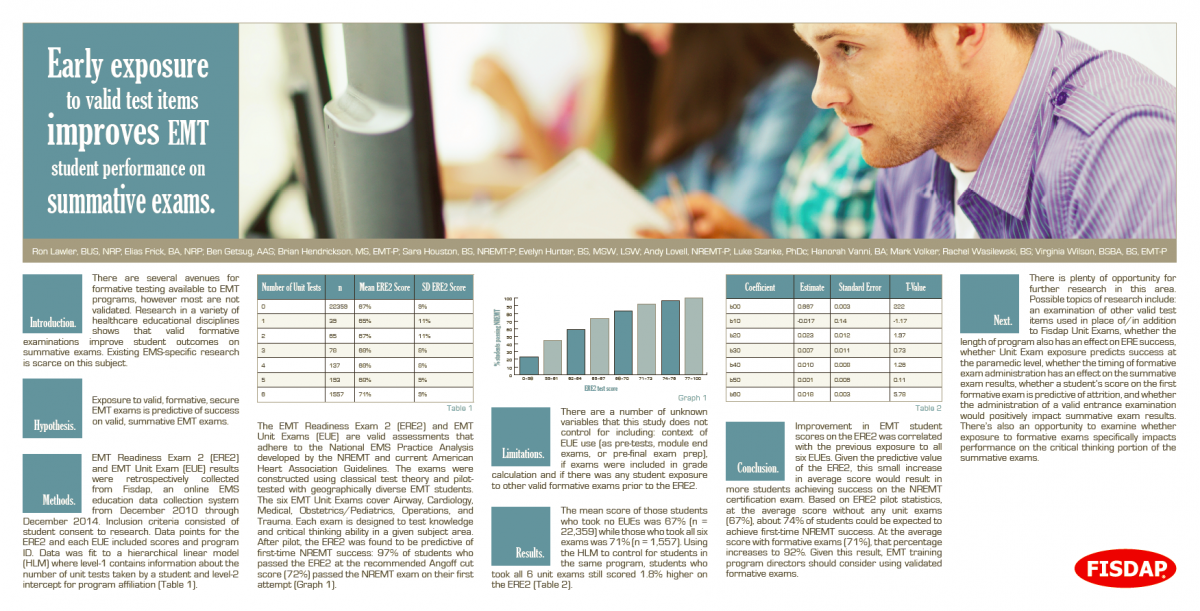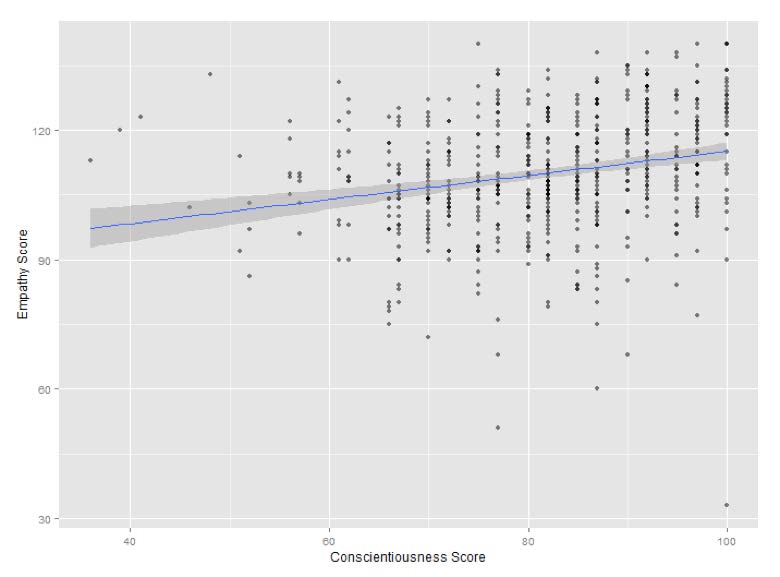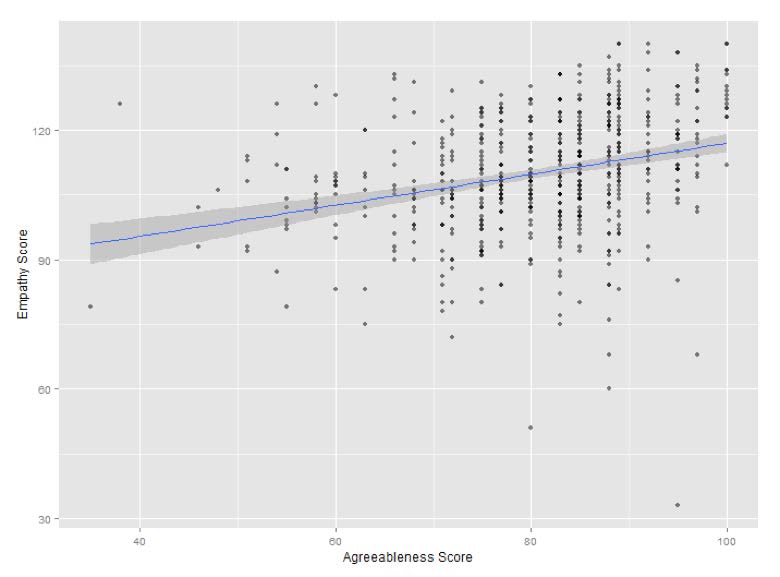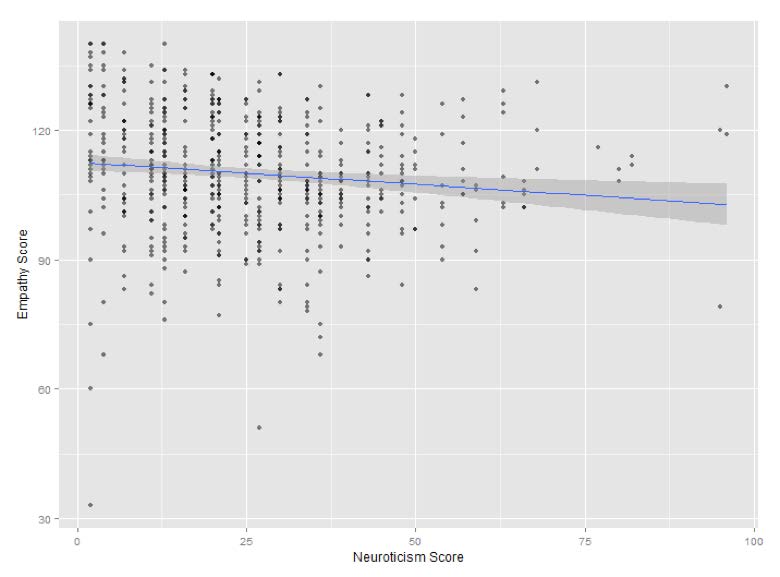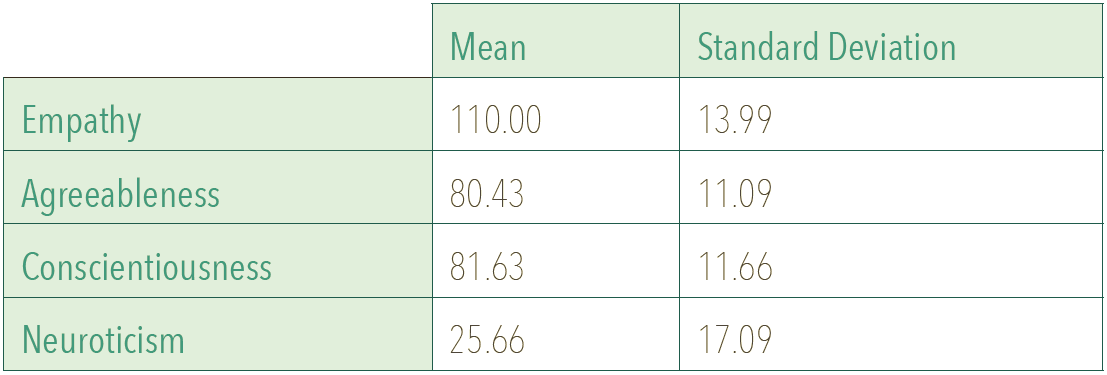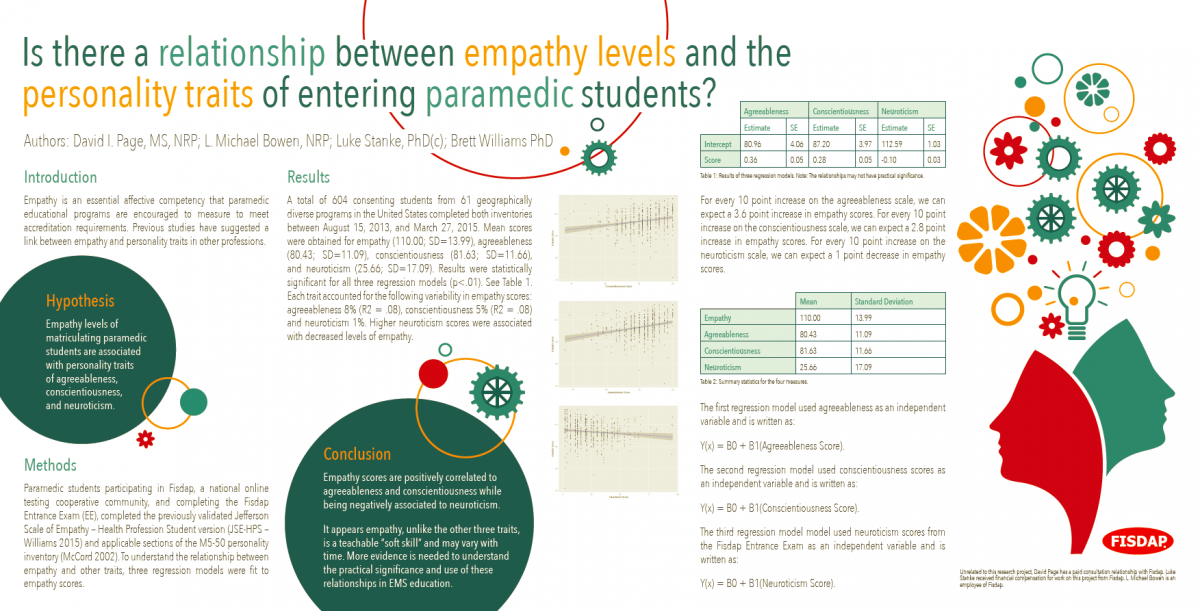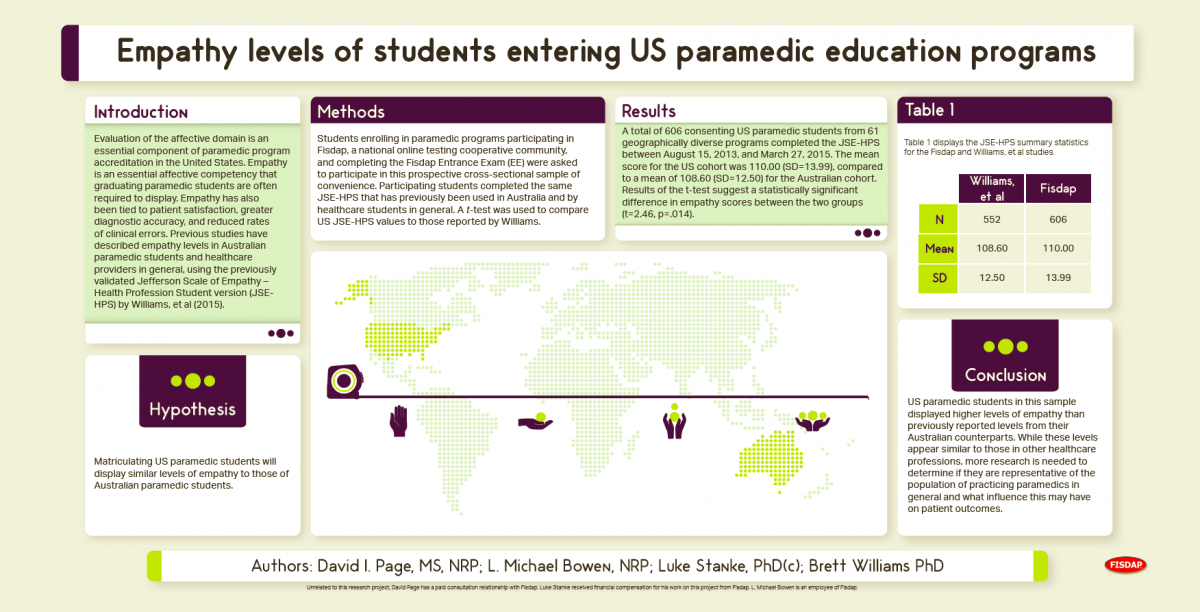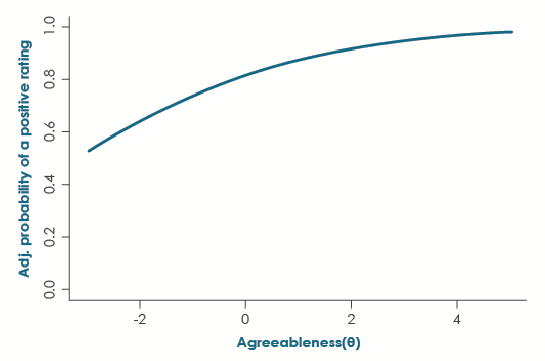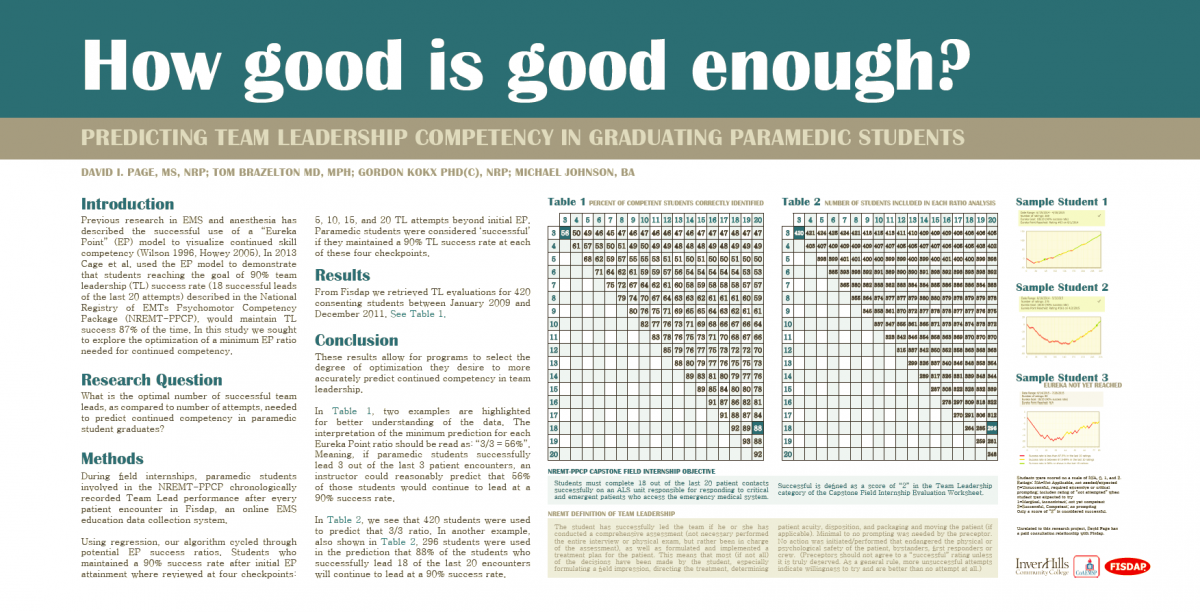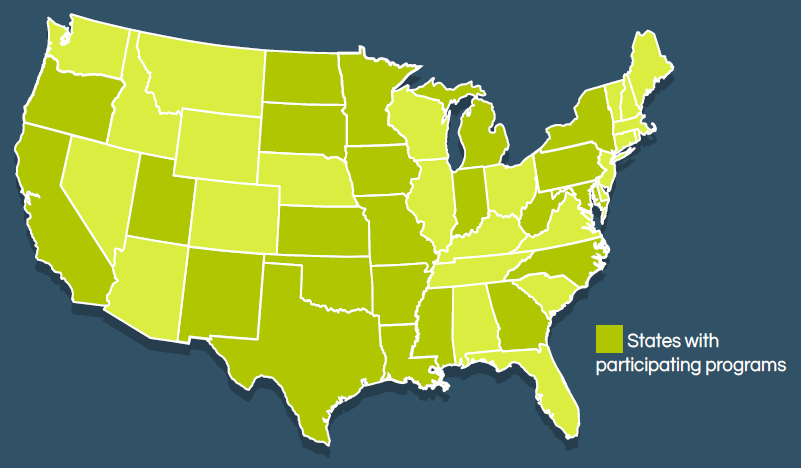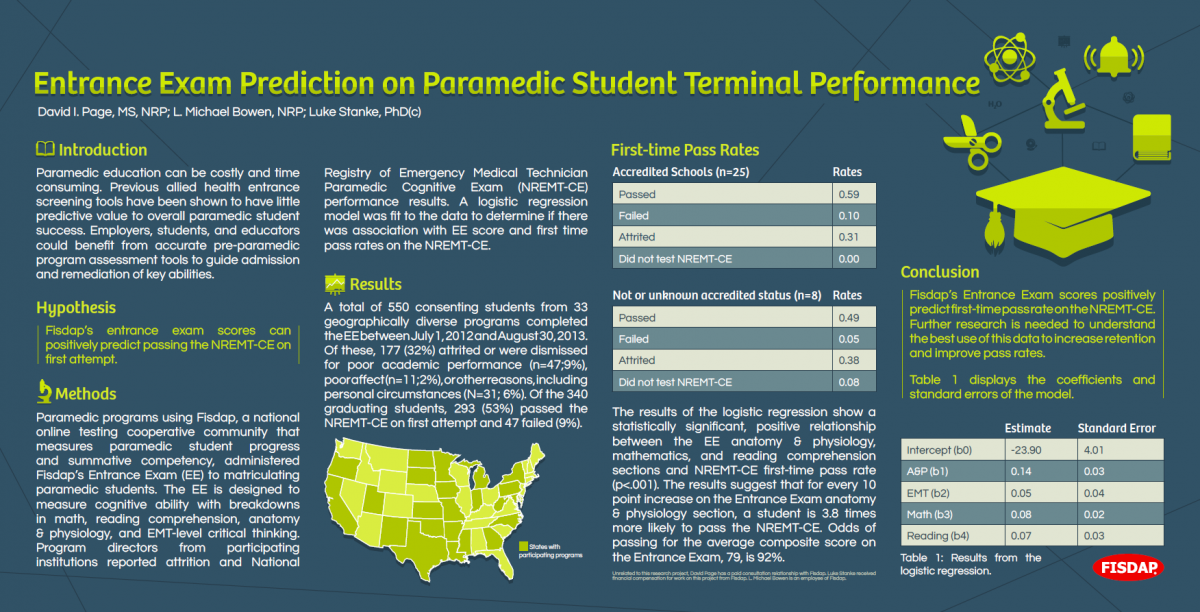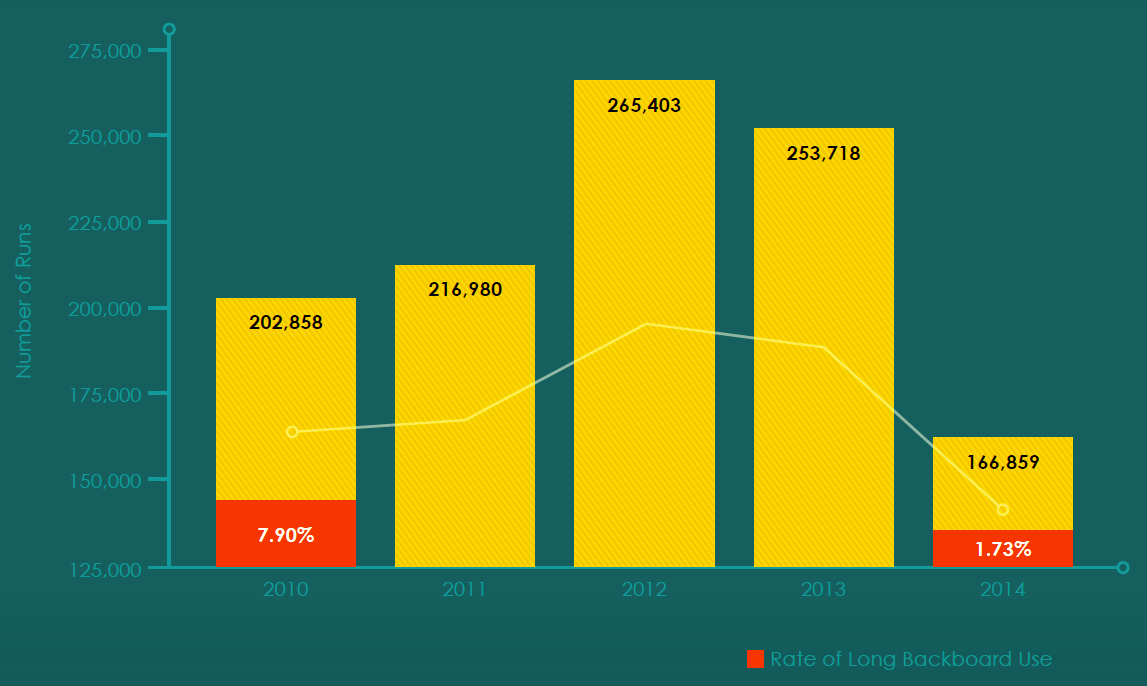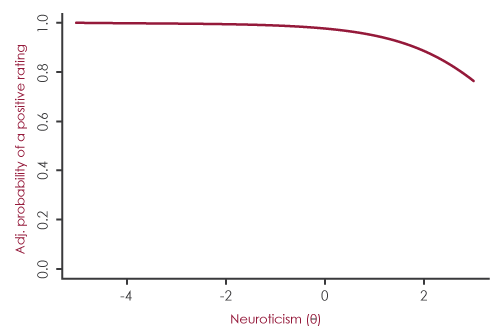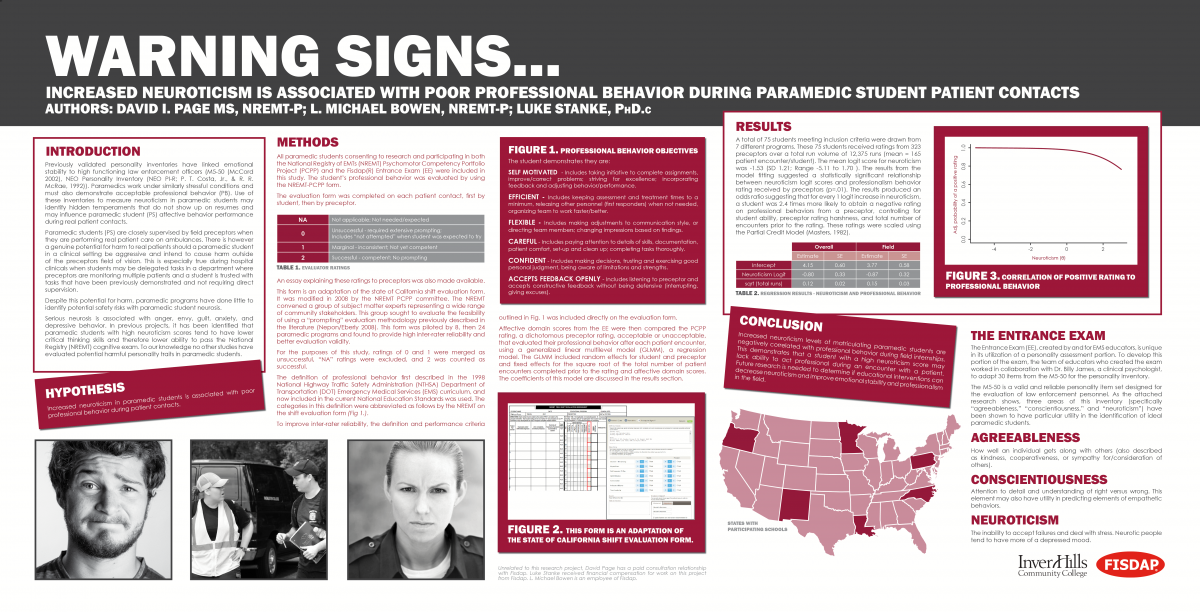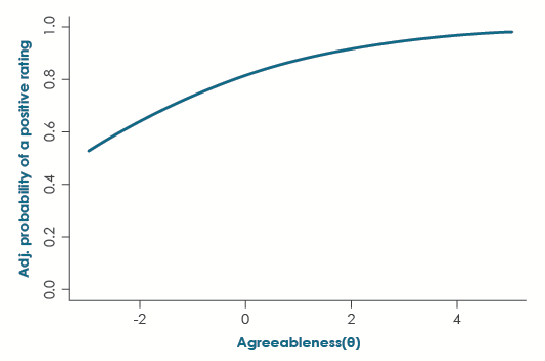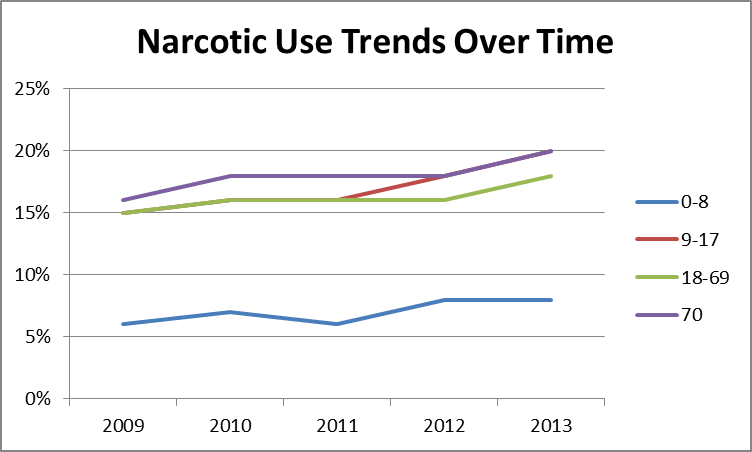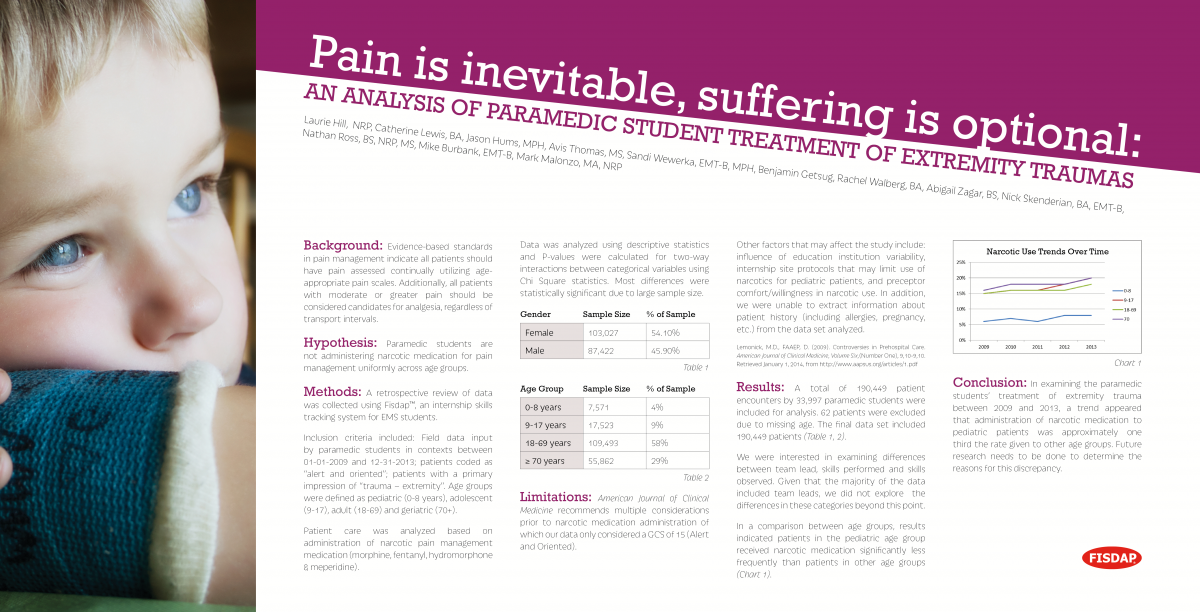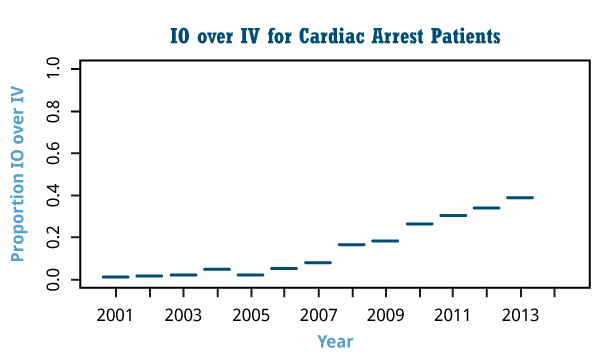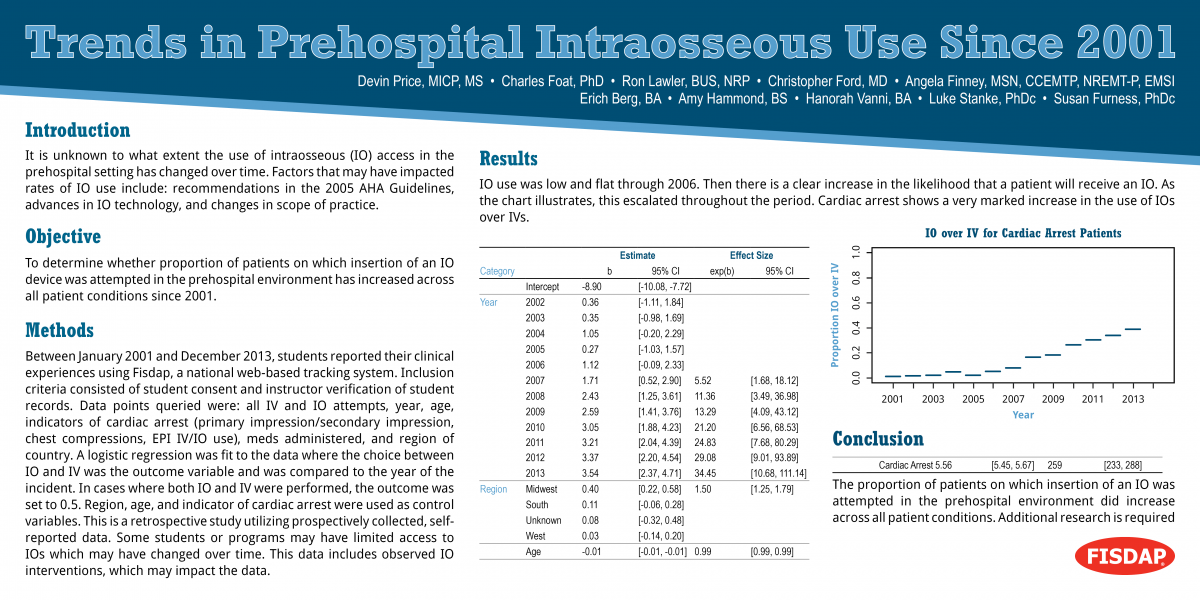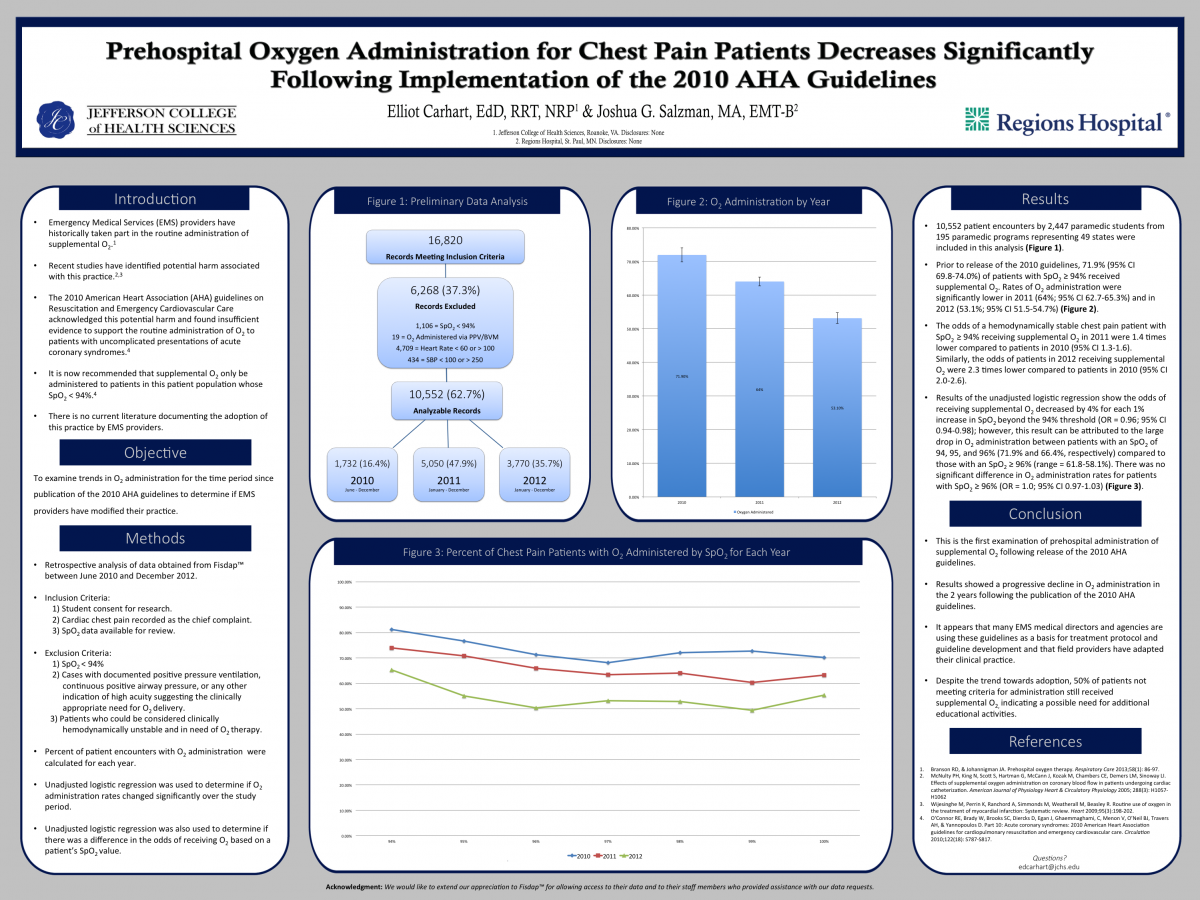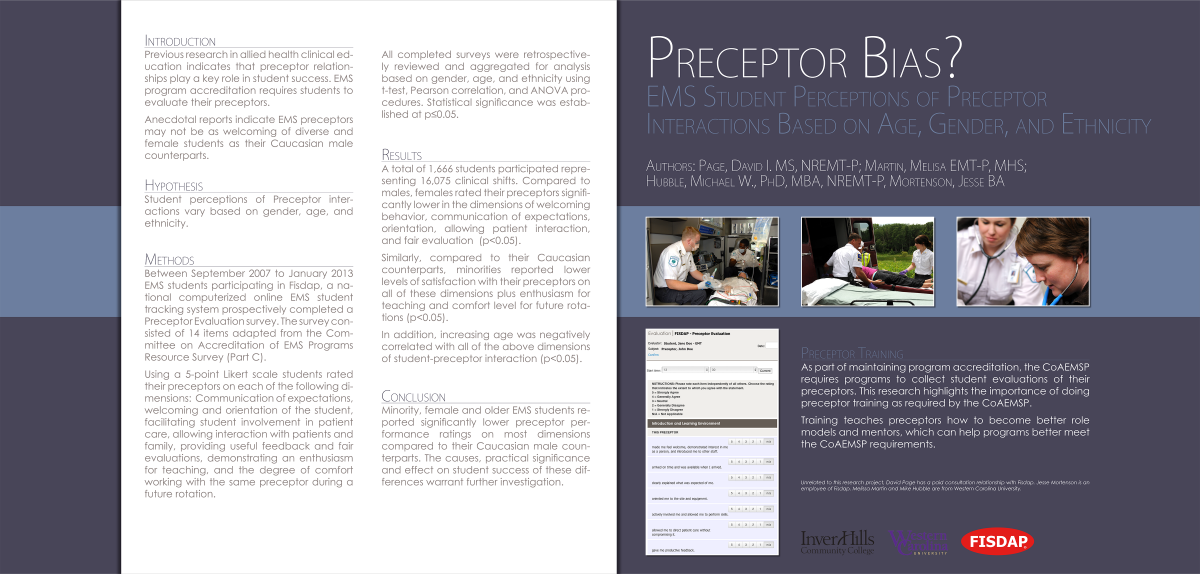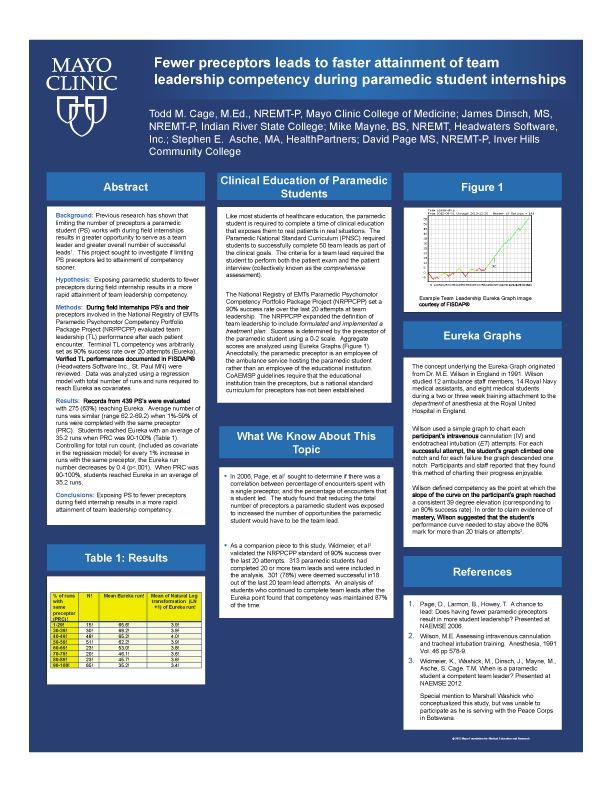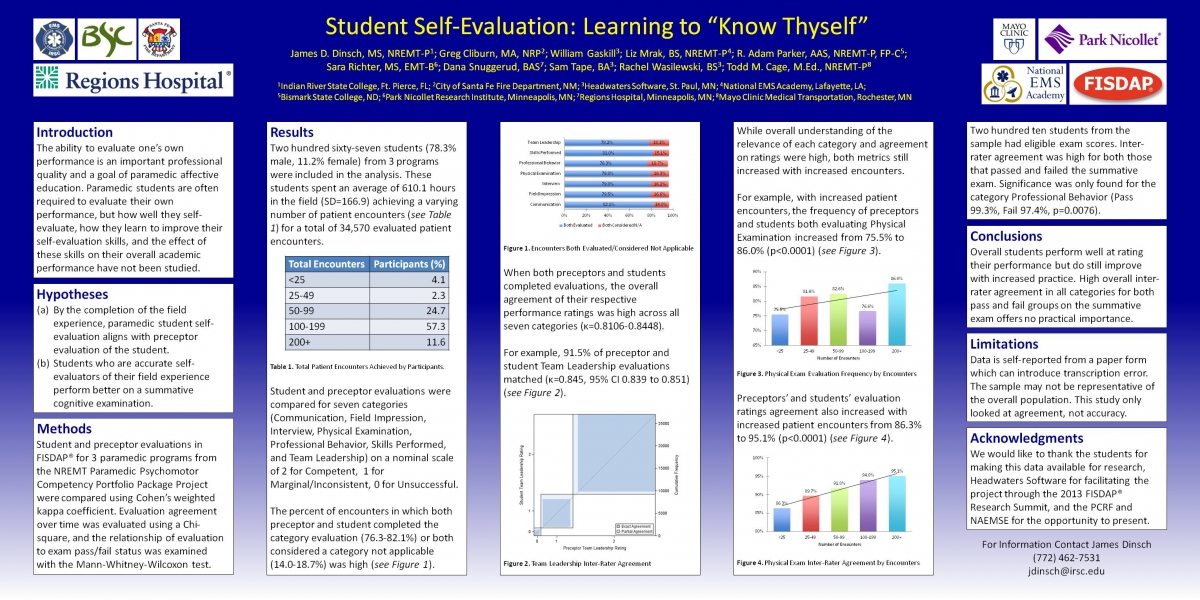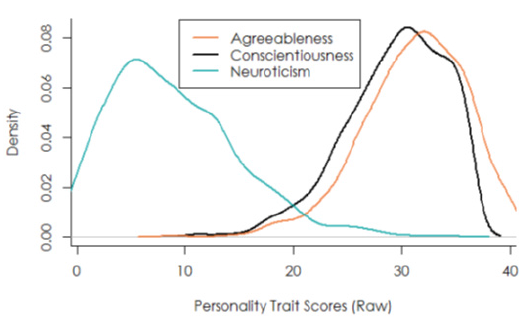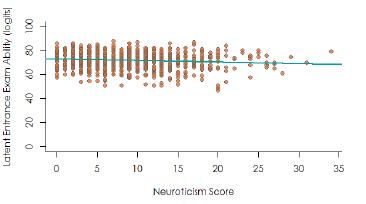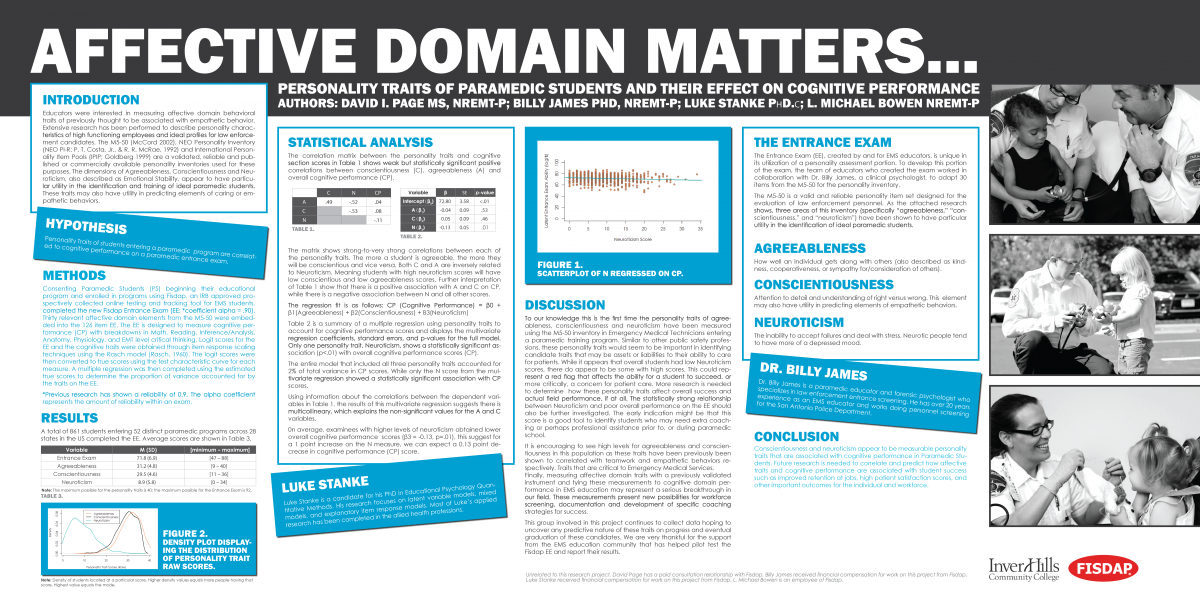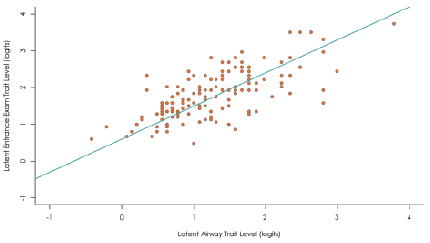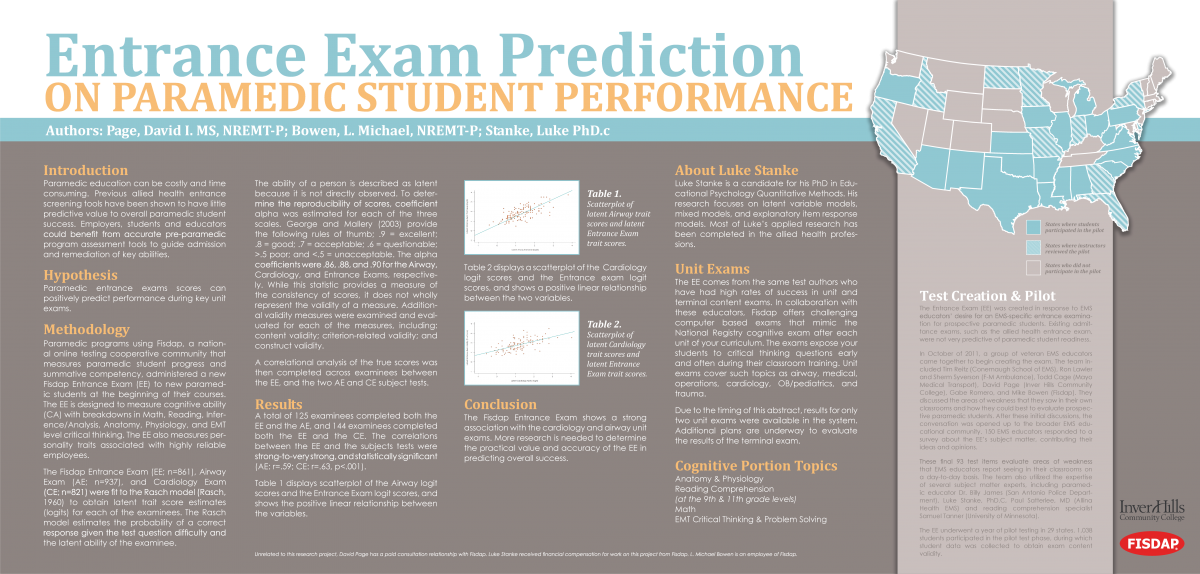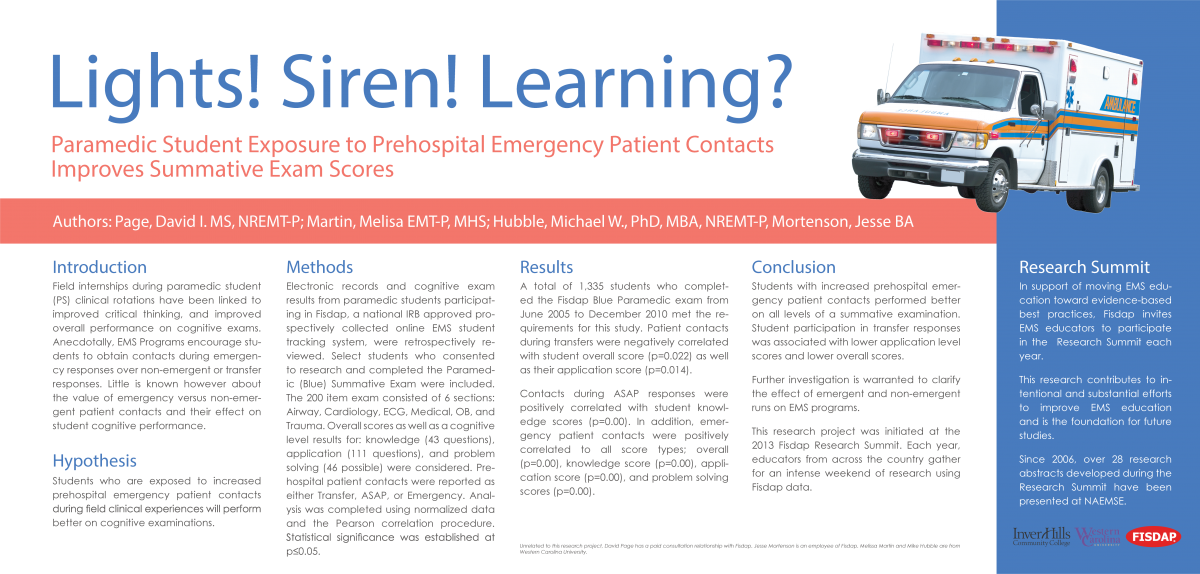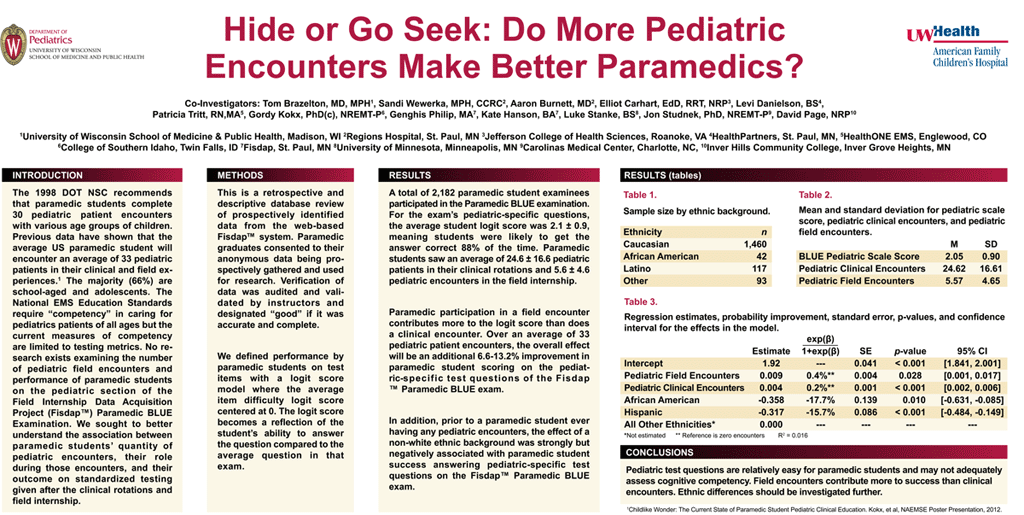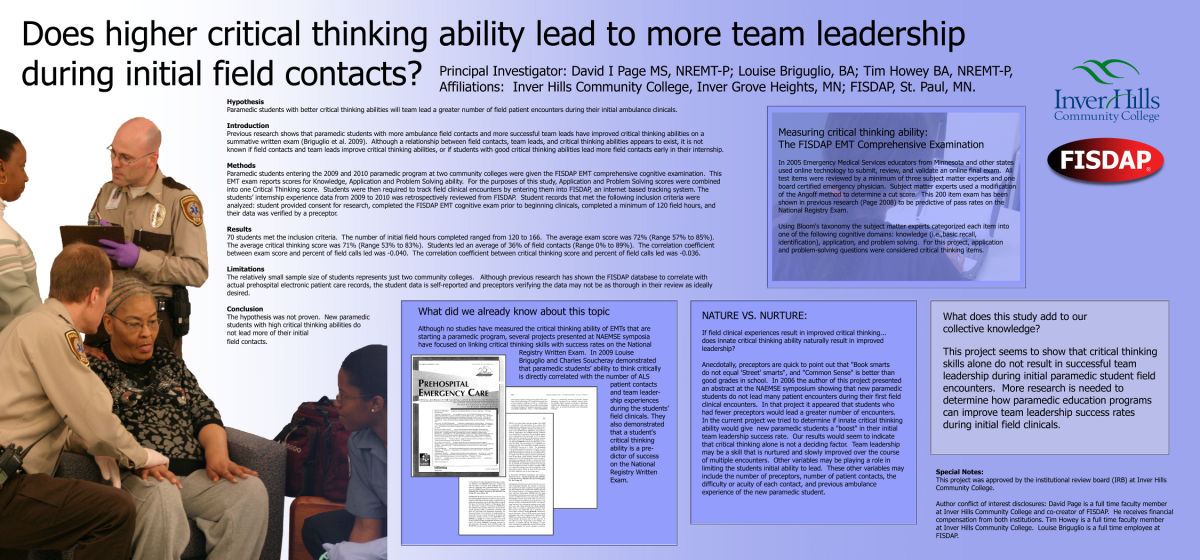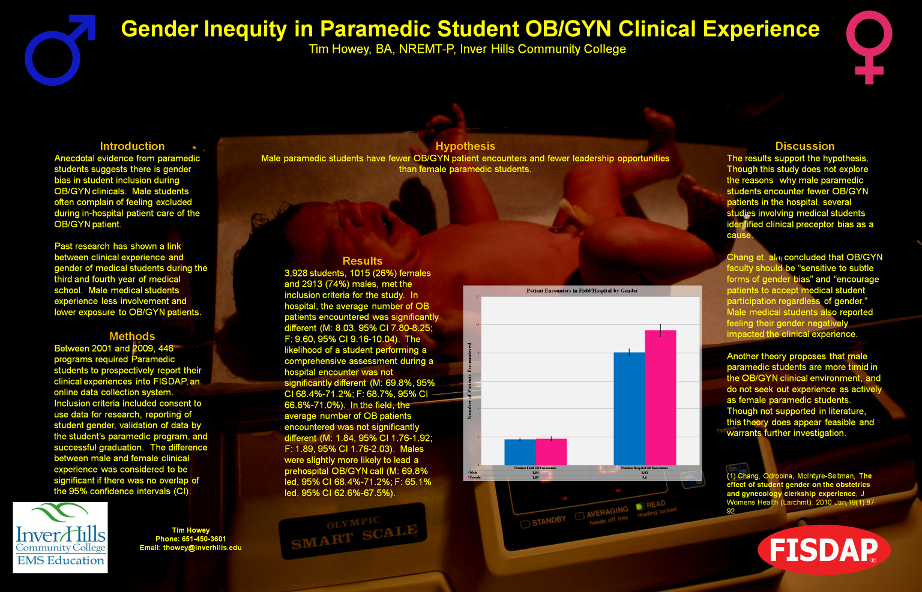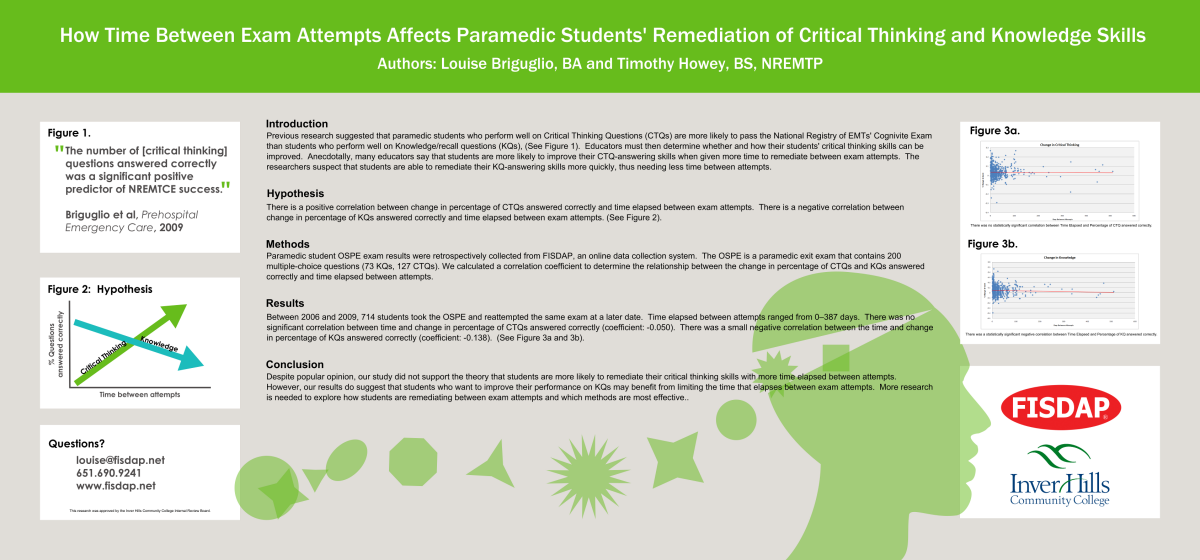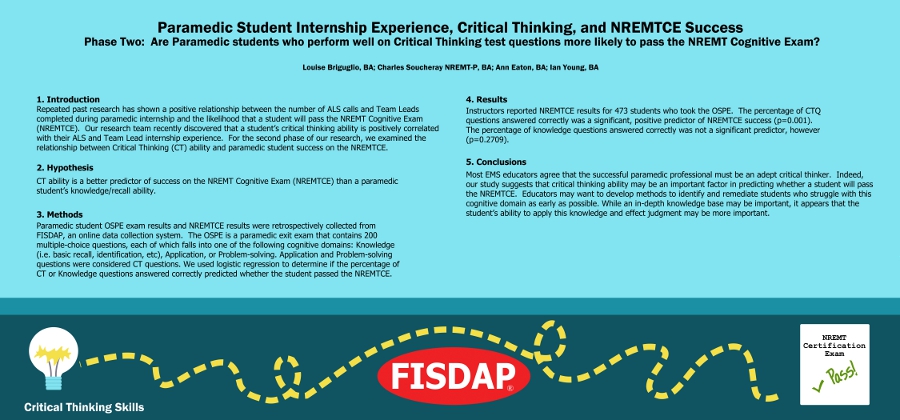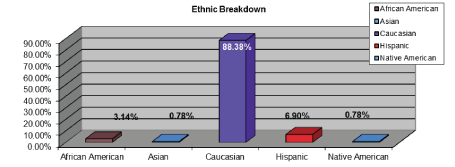Research
Facilitating EMS research is one of Fisdap’s most important objectives and we are proud to be a leader in EMS educational research. Fisdap has been involved in research since our beginning. Learn More about our research process.
2019
| NAEMSE 2019 Best Research | Flipping Toward Success |
The flipped classroom pedagogy is based on students gaining first exposure to new material outside of class followed by the assimilation of that knowledge through in-class activities and discussion. Flipped classrooms are thought to enhance learning through interactive activities among instructors and peers that lead to improved outcomes. Results from a 2018 study found that EMT students have higher cognitive competency in a flipped classroom setting.
View the AbstractEvaluating the impact of individual student exam performance on overall cohort exam performance
Socioeconomic status, class size and attendance are known to affect student performance, but it is not yet known if the performance of the class as a whole affects learner success. This study seeks to determine if the class performance affects individual academic achievement.
Does your address make the grade? The relationship between county-level socioeconomic status and the academic performance of paramedic students.
There are several factors that can affect a student’s academic performance. These include but are not limited to: family and peer support, previous education, and socioeconomic status (SES). Research indicates that students of lower SES are educationally disadvantaged. This study sought to examine the relationship between paramedic student academic performance and county-level SES indicators.
Paramedic student performance on the Paramedic Readiness Exam 4 (PRE4) improves with exposure to higher acuity patients.
Paramedic program directors struggle with balancing limited time available in clinical and field learning experiences with accomplishing required objectives and allowing for a broad exposure to differing patient types. The purpose of this study was to examine how the student’s exposure to perceived high-acuity patients relates to cognitive performance.
Does patient age and criticality affect the paramedic student’s opportunity to be a team leader?
Paramedic students must act and demonstrate competency as team leader in prehospital patient care encounters to successfully graduate their paramedic program. In previous research it was found that with the higher acuity of the patient the student’s likelihood to lead decreased. This study sought to investigate whether the age and acuity of the patient influences the student's frequency to be team leader.
Are We Dense? Effects of Paramedic Program Length and Non-Didactic Course Density on Student Summative Exam Scores
A lack of standardization among paramedic programs has long been identified as one of the most significant problems in prehospital education. One example of this lack of standardization is program length and density. According to the National Emergency Medical Services Standard Curriculum, the length of a paramedic program is estimated to take approximately 1,000-1,200 hours. These hours may be delivered over months or years affecting program density. This study was designed to determine whether paramedic program length and density have an effect on paramedic student success.
Beyond the Lecture: Effects of Non-Didactic Hours on Paramedic Student Success
According to the National Emergency Medical Services Standard curriculum the length for an initial paramedic course is estimated to take approximately 1,000-1,200 hours. The hours spent in a paramedic program span didactic, lab, clinical, and field settings. The hours spent in each of these components also varies among programs. Accreditation guidelines do not offer specific information in which setting the students should concentrate their time. Despite widespread agreement on the importance of non-didactic experiences, the number of hours for each phase remains unclear and inconsistent across programs. This study was designed to explore which non-didactic setting is the most valuable for paramedic students.
Lab Knows Best: Effects of Experiential Course Setting on Emergency Medical Technician Student Success
According to the National Emergency Medical Services Education Standards the length of an initial Emergency Medical Technician (EMT) course is estimated to take approximately 150-190 hours. These hours include the four integrated phases of EMT education – didactic, laboratory, clinical, and field. The didactic phase is the most uniform while the number of hours spent in the laboratory, clinical, and field setting show more variability among programs. This project was designed to determine whether the number of hours spent in the laboratory, clinical, and field settings are related to EMT student success on a summative exam. Evidence from this study may be used by educators to determine the most effective training venues for a more valuable educational experience.
2018 Return to Top
Flipped classroom students will score higher on cognitive exams than traditional EMT students.
A flipped classroom model is based on out-of-class learning for core content followed by in-class application-level activities. Flipped classrooms are thought to enhance learning through interactive activities among instructors and peers. Data from a 2016 pilot study found a marginal increase in NREMT cognitive exam scores in a flipped OB module.
What Matters More: How Education and Experience Affect Paramedic Readiness
There are no bigger contested predictors of classroom success than education and experience. Paramedics, educators, and students all have opinions on what combination of experience and education will lead to the best paramedic. Even the data can provide conflicting information. A 2017 paper found nursing students who only graduated high school performed significantly worse than students with a prior bachelor’s degree. In contrast, a 2011 study showed an inverse relationship between years of experience and pass rates. This study sought to determine how education or years of experience prior to paramedic training related to paramedic readiness exam pass rates.
EMT Student Self-Confidence and Its Effect on a Summative Examination
The connection between academic performance and self-efficacy (i.e., self-confidence) is well-established in many disciplines. Yet, this relationship among entry-level EMT students remains to be determined This study seeks to identify a correlation to serve as a predictive measure between EMT student self-efficacy and academic performance on a summative EMT exam. Student self-confidence scores were compared in relation to the their respective summative Fisdap EMT Readiness Exam 2.0 (ERE2) scores.
Student Measurement of Achievement on a Readiness Test (SMART): The Predictive Validity of an EMT Entrance Exam on Candidate Readiness
Continued growth in Emergency Medical Services (EMS) has driven ever-increasing demand for educational training. Thus, EMS programs must utilize effective pre-course evaluative tools to identify candidates most likely to be successful and those who may require additional support. This study evaluates the use of the Fisdap EMT Entrance Assessment (EMTEA) as a valid predictive tool on the summative EMT Readiness Exam 2.0 (ERE2)
With Age Comes Wisdom? Student Age as Predictors of Success on an EMT Readiness Exam
Most states mandate an EMT candidate reach eighteen years of age before initial certification/licensure. Additionally, many EMS employers require potential employees reach the age of twenty-one before employment. Yet, EMT courses administered through high schools have grown in popularity. Given the disparity between regulatory policies and educational program requirements regarding candidate age, the predictive nature of student age on EMT course success warrants closer examination.
2017 Return to Top
Does a paramedic student's exposure to cardiac cases during internship, clinical component, or simulation deepen understanding of cardiac conditions?
Work readiness of paramedic students is influenced by experiences during field internship, clinical placements and laboratory simulations. This study explored the relationship between exposures to cardiac cases during field, clinical, or laboratory practicum and the odds of passing the Cardiac Unit Examination (CUE) or Paramedic Readiness Examinations (PRE).
Paramedic Student Treatment of Intrapartum Pain
There is a dearth of literature concerning out-of- hospital management of intrapartum pain by paramedics; EMS drug therapy protocols offer little advice to guide administration. Although obstetric cases may appear uncomplicated, when complications do occur they can pose significant risk to the mother and baby if not properly managed. Safe management of childbirth by paramedics requires appropriate curriculum design and training opportunities. A lack of time spent on obstetrics within curriculum has contributed to a lack of confidence among paramedics while managing obstetric cases (Dawson et al., 2003). NEMSIS data in 2015 reports 136,370 (0.45% overall responses) obstetric cases attended by paramedics, with 65.4% reporting pain as the primary complaint (NEMSIS, 2016). Risks of administering systemic analgesics in labor include maternal sedation and respiratory depression, loss of protective airway reflexes, and the risk of neonatal depression (Anderson, 2011). The aim of this study was to determine the frequency of obstetric in-field calls attended by student paramedics; determine the proportion of patients receiving pharmacological pain relief; and to report the type of analgesia administered.
2016 Return to Top
Can you fail your way to success? Do one or more formative examination failures predict a summative examination failure?
Paramedic programs utilize formative assessments to determine cognitive competency. There are institutions that terminate students based on not achieving a pre-determined score on one or more formative examinations. Previously published research has shown that students' exposure in clinical and field settings, particularly to emergent patients and successful team leads, improved critical thinking abilities on a summative examination.
Impact of Learning Environment on Paramedic Student Critical Thinking
Increased high quality lab experiences for students are occurring as a result of implementation of the NREMT Paramedic Psychomotor Competency Portfolio (PPCP). Previous research suggests increased field experiences improve critical thinking ability. Impact of lab on critical thinking ability has not yet been examined. Impact of clinical, field, and lab experiences on critical thinking ability was analyzed.
Analgesia Provided by Paramedic Students: Evidence of Disparities
Evidence of disparities in pain management practice have been documented in paramedic practice. The purpose was to evaluate differences in analgesic treatment associated with age, gender, and clinical presentation in patients sustaining injury due to ground level falls.
Tying It Together: Examining the Relationship between Student Affective Domain Traits and Restraint Use
Psychiatric emergencies, a common EMS call, may require patient restraint, putting all involved at risk. In order to reduce the frequency of restraint use, factors increasing restraint use should be identified and mitigated. This study examines the relationship between paramedic student affective domain traits, as measured by the Fisdap Entrance Exam (EE), and their rate of restraint use in patients experiencing psychiatric crises.
2015 Return to Top
Diversification in EMS: Are We as Diverse as We Think We Are?
Research shows that the demographics of EMS professionals in the United States are not diverse and there is a lack of studies examining the demographics of individuals pursuing an EMS career. Understanding the changing demographics of individuals pursuing EMS allows educators to better prepare for their audience and changing learning environment. This study describes the diversification of EMS students during the past six years.
Early Exposure to Valid Test Items Improves EMT Student Performance on Summative Exams
There are several avenues for formative testing available to EMT programs, however most are not validated. Research in a variety of healthcare educational disciplines shows that valid formative examinations improve student outcomes on summative exams. Existing EMS-specific research is scarce on this subject.
Is There a Relationship Between Empathy Levels and the Personality Traits of Entering Paramedic Students?
Empathy is an essential affective competency that paramedic educational programs are encouraged to measure to meet accreditation requirements. Previous studies have suggested a link between empathy and personality traits in other professions. Paramedic students participating in Fisdap, a national online testing cooperative community, and completing the Fisdap Entrance Exam (EE), completed the previously validated Jefferson Scale of Empathy – Health Profession Student version (JSE-HPS – Williams 2015) and applicable sections of the M5-50 personality inventory (McCord 2002).
Empathy Levels of Students Entering US Paramedic Education Programs
Evaluation of the affective domain is an essential component of paramedic program accreditation in the United States. Empathy is an essential affective competency that graduating paramedic students are often required to display. Empathy has also been tied to patient satisfaction, greater diagnostic accuracy, and reduced rates of clinical errors. Previous studies have described empathy levels in Australian paramedic students and healthcare providers in general, using the previously validated Jefferson Scale of Empathy – Health Profession Student version (JSEHPS) by Williams, et al (2015).
How Good is Good Enough? Predicting Team Leadership Competency in Graduating Paramedic Students
Previous research in EMS and anesthesia has described the successful use of a "Eureka Point" (EP) model to visualize continued skill competency (Wilson 1996, Howey 2005). In 2013 Cage et al. used the EP model to demonstrate that students reaching the goal of 90% team leadership (TL) success rate (18 successful leads of the last 20 attempts) described in the National Registry of EMTs Psychomotor Competency Package (NREMT-PPCP), would maintain TL success 87% of the time. In this study we sought to explore the optimization of a minimum EP ratio needed for continued competency.
Are You There Doc? Paramedic Student Team Lead Utilization of MD Consultation
Current EMS guidelines indicate that if a patient's condition does not conform to standard protocol, the paramedic should always contact medical control for instruction. However, a recent publication investigating cardiac patient encounters found that protocol based care is equivalent and perhaps slightly better than online medical control. Therefore, the purpose of this study was to examine the frequency of paramedic student team leads decision to access physician consultation from the field during cardiac patient encounters. Additionally, we sought to determine predictors in identifying the likelihood of physician consultation as well as identify any changes in patient care.
Entrance Exam Prediction on Paramedic Student Terminal Performance
Paramedic education can be costly and time consuming. Previous allied health entrance screening tools have been shown to have little predictive value to overall paramedic student success. Employers, students, and educators could benefit from accurate pre-paramedic program assessment tools to guide admission and remediation of key abilities.
Impact of the NAEMSP Guidelines for Spinal Immobilization and Long Backboard Application on Usage Rates between 2010 and 2014
Previous research has demonstrated that use of the long backboard for spinal immobilization in trauma patients may cause more harm than good, prompting the release of the 2013 NAEMSP/ACS Committee on Trauma joint position statement on long backboard and cspine immobilization usage. This study evaluated whether the release of this position statement impacted the rates of long backboard and ccollar usage.
Factors Associated with Appropriate Spinal Immobilization and Long Backboard Use
The 2013 NAEMSP/ACS Committee on Trauma joint position statement on long backboard and cspine immobilization included criteria defining appropriate use of these treatments. This study sought to identify factors associated with the appropriate use of long backboard immobilization following release of these guidelines.
Examining the Role of Experience and Affective Personality Traits in Paramedic Students' Success
Paramedic programs are evaluated on course completion rates and National Registry of EMT's pass rates by accrediting bodies and regulatory agencies. Like other health professions, EMS educators are interested in methods that predict student success as entrance exams and background evaluations. The connection between affective personality traits and paramedic success has also been of recent interest to EMS educators. Many paramedic programs require varying levels of EMT experience for admission, because experience is believed to offer enhanced understanding. Although these predictive variables have been discussed, limited research on this subject has been completed.
2014 Return to Top
| NAEMSE 2014 Best Research | Increased Neuroticism is Associated with Poor Professional Behavior During Paramedic Students Patient Contacts |
Agreeableness is Linked to Improved Communication During Paramedic Student Internships
This project compared student scores on the Fisdap Entrance Exam and preceptor ratings of a student's "Communication Skills," as outlined in the National Registry of EMTs (NREMT) Psychomotor Competency Portfolio Project (PCPP) and recorded in Fisdap. Results showed a positive relationship between matriculating paramedic students' level of agreeableness and their preceptors' rating of their communication skills. Agreeableness was the focus because this temperament is associated with motives to maintain positive interpersonal relations.
Clinical Compliance of Paramedic Students Acquiring Prehospital 12-lead ECGs
Prehospital 12-lead acquisition is an important component of differential diagnosis. This abstract examined the number of prehospital 12-lead ECGs acquired by paramedic students as compared with the number of patients seen who met clinical criteria. Of the 89,507 patients meeting inclusion criteria, 33.2% received a 12-lead ECG, demonstrating a sub-clinical frequency.
Pain is Inevitable, Suffering is Optional: An Analysis of Paramedic Student Treatment of Extremity Traumas
Evidence-based standards in pain management indicate all patients should have pain assessed continually utilizing age-appropriate pain scales. This abstract examines rates of narcotic administration in extremity trauma patients and their variation across age groups. In a comparison between age groups, results indicated patients in the pediatric age group received narcotic medication significantly less frequently than patients in other age groups.
View the Abstract View the PosterTrends in Prehospital Intraosseous Use Since 2001
This project examined trends in the rate of prehospital intraosseous access across all patient types between the year 2001 and 2013. Factors that may have impacted rates of IO use include: recommendations in the 2005 AHA Guidelines, advances in IO technology, and changes in scope of practice. IO use was low and flat through 2006. Then there is a clear increase in the likelihood that a patient will receive an IO. As the chart illustrates, this escalated throughout the period. Cardiac arrest shows a very marked increase in the use of IOs over IVs.
2013 Return to Top
Prehospital Administration of Oxygen for Chest Pain Patients Decreases Significantly Following Implementation of the 2010 AHA Guidelines
Since 2010, the American Heart Association (AHA) Emergency Cardiovascular Care guidelines no longer recommend routine administration of supplemental oxygen (O2). This applies to hemodynamically stable patients experiencing chest pain whose oxyhemoglobin saturation (SpO2) is ≥ 94%. This study examined trends in prehospital oxygen administration by emergency medical services (EMS) providers following publication of this guideline.
Preceptor Bias? - EMS Student Perceptions of Preceptor Interactions Based on Age, Gender, and Ethnicity
Previous research in allied health clinical education indicates that preceptor relationships play a key role in student success. EMS program accreditation requires students to evaluate their preceptors. Anecdotal reports indicate EMS preceptors may not be as welcoming of diverse and female students as their Caucasian male counterparts.
Fewer Preceptors Leads to Faster Attainment of Team Leadership Competency During Paramedic Student Internships
Previous research has shown that limiting the number of preceptors a paramedic student (PS) works with during field internships results in greater opportunity to serve as a team leader and greater overall number of successful leads. This project sought to investigate if limiting PS preceptors led to attainment of competency sooner.
Student Self-Evaluation: Learning to "Know Thyself"
The ability to evaluate one's own performance is an important professional quality and a goal of paramedic affective education. Paramedic students are often required to evaluate their own performance, but how well they self-evaluate, how they learn to improve their self-evaluation skills, and the effect of these skills on their overall academic performance have not been studied. The purpose of this study was to determine whether the accuracy of student self-evaluation improves over time and whether or not that has an effect on academic performance.
Affective Domain Matters... Personality Traits of Paramedic Students and Their Effect on Cognitive Performance
Educators were interested in measuring affective domain behavioral traits of previously thought to be associated with empathetic behavior. Extensive research has been performed to describe personality characteristics of high functioning employees and ideal profiles for law enforcement candidates. The M5-50 (McCord 2002), NEO Personality Inventory (NEO PI-R; P. T. Costa, Jr., & R. R. McRae, 1992) and International Personality Item Pools (IPIP; Goldberg 1999) are a validated, reliable and published or commercially available personality inventories used for these purposes. The dimensions of Agreeableness, Conscientiousness and Neuroticism, also described as Emotional Stability, appear to have particular utility in the identification and training of ideal paramedic students. These traits may also have utility in predicting elements of caring or empathetic behaviors.
Entrance Exam Prediction on Paramedic Student Performance
Paramedic education can be costly and time consuming. Previous allied health entrance screening tools have been shown to have little predictive value to overall paramedic student success. Employers, students and educators could benefit from accurate pre-paramedic program assessment tools to guide admission and remediation of key abilities. This study looked at students' results on the Fisdap Entrance Exam.
Lights! Siren! Learning? Paramedic Student Exposure to Prehospital Emergency Patient Contacts Improves Summative Exam Scores
Field internships during paramedic student (PS) clinical rotations have been linked to improved critical thinking, and improved overall performance on cognitive exams. Anecdotally, EMS Programs encourage students to obtain contacts during emergency responses over non-emergent or transfer responses. Little is known however about the value of emergency versus non-emergent patient contacts and their effect on student cognitive performance. This research examined whether students who were exposed to increased prehospital emergency patient contacts during field clinical experiences performed better on cognitive examinations.
Hide or Go Seek: Do More Pediatric Encounters Make Better Paramedics?
The 1998 DOT NSC recommends that paramedic students complete 30 pediatric patient encounters with various age groups of children. Previous data have shown that the average US paramedic student will encounter an average of 33 pediatric patients in their clinical and field experiences. 1 The majority (66%) are school-aged and adolescents. The National EMS Education Standards require "competency" in caring for pediatrics patients of all ages but the current measures of competency are limited to testing metrics. No research exists examining the number of pediatric field encounters and performance of paramedic students on the pediatric section of the Field Internship Data Acquisition Project (Fisdap™) Paramedic BLUE Examination. We sought to better understand the association between paramedic students' quantity of pediatric encounters, their role during those encounters, and their outcome on standardized testing given after the clinical rotations and field internship.
2012 Return to Top
The Association between Class Size and the Cognitive Knowledge of EMT Students Assessed Using EMT Readiness Exam 2
This study looked at the relationship between class size and performance on a cognitive exam for EMT students. It was found that there is an association between class size and students' cognitive performance. Specifically, the highest pass rate was found among students in a class greater than 23.
| NAEMSE 2012 Best Research |
Clinical/Field Experience and Cognitive Exam Success: What Matters for EMT Students?
|
This study explored whether more experience in the field or clinic would improve the likelihood of success on a summative EMT exam. Research showed that the total number of skills (observed and performed combined) was the only independent predictor of summative exam success, providing a slight (5%) increase in ability to discriminate between student success and failure.
| NAEMSE 2012 Best Research Presentation | Is EMS Colorblind? |
This study looked at whether or not demographics affect paramedic student attrition rates. It was found that course completion does not differ with minority status. Of the 273 students included in the study who did not graduate, there was no statistically significant difference between minority groups and non-minorities in the categories of age, gender, and ethnicity.
When is a Paramedic Student a Competent Team Leader?
This study explored team leadership competency for paramedic students. It was determined that the NRPPCPP defined standard of success in 18 out of the last 20 attempted team leads is a reliable predictor of continued student competency, but that students may need more than the previously recommended 50 attempts to reach that standard.
Childlike Wonder: The Current State of Paramedic Student Pediatric Clinical
This study evaluated the current state of paramedic student pediatric clinical experiences. It found that paramedic students average 33 pediatric patient contacts with highly variable settings, ages, and pathologies.
2011 Return to Top
Trends in Paramedic Student Advanced Airway Placements: 2001-2009
This study examined nine years of Fisdap data pertaining to student advanced airway placements, focusing on the number of ETI's done in the clinical setting versus the field setting.
Is There an Ideal Number of Field Internship Patient Contacts to Predict EMT Student Success on a Summative Exam?
This study examined the efficacy of requiring 10 patient assessments in a clinical setting for EMT-B students. It was found that field contacts were a high predictor of success while hospital hours were a predictor of lower scores. The highest predictor of scores correlated to 15 field contacts and 12 clinical hours.
Is a Cut Score of 61 on the HOBET Still Cutting the Mustard?
This study examined whether the cut score of 61 (Davis 1997) on the HOBET medical entrance examination was still a valid score for paramedic students. The study showed that the cut score of 61 did have a positive predictive value sensitive enough to exclude students who are not likely to succeed. A higher cut score (79) can make the results more sensitive, but also exclude a significant number of students who ultimately did succeed in their paramedic programs.
| NAEMSE 2011 Best Research Presentation |
Paramedic Program Entrance Exams As A Predictor of Student Success
|
This study looked at math and science scores on the HOBET exam for students entering paramedic school. In an attempt to correlate higher math and science scores with success in paramedic programs, research found that science scores were the only portion of the entrance exam that served as a predictor of success.
| NAEMSE 2011 Best Research |
Paramedic Education Programs: An Analysis of Cognitive Success Based On Educational Institution Type
|
This study aimed to find whether institutional type (four year, two year, or non-academic) had an effect on student success on a written summative exam. Using a sample of 4,111 students, the study found statistically, but not educationally, significant results. In effect, no meaningful difference in success rates could be drawn between four year, two year, and non-academic institutions.
Let 'em Play in the Street: Optimizing Internship Rotations for Paramedic Student Competency
This study searched for an optimum training environment that corresponded with specific sections of a comprehensive paramedic exam. In all cases, field patient contacts resulted in better performance across all sections, while clinical experiences had no noticeable benefit for paramedic student competency. Ultimately, field contacts were shown to be the most important for developing critical thinking skills.
An Investigation of the Effects of Cognitive Apprenticeship Within a Simulation-based Learning Environment on EMT Students' Development of Diagnostic Reasoning Skills
This study tested the use of scenario based simulations and cognitive apprenticeship as a way of improving scores on the Fisdap EMT Readiness Summative Exam. As a prospective study, this research compared two classes—one traditional and one heavy-simulation based—during their education and up to their final exams. In all areas of the comprehensive exam—as well as in practical assessment skills—students in the simulation-heavy class outperformed the traditionally taught students.
2010 Return to Top
Relationship Between Paramedic Student Cardiac and Cardiac Arrest Patient Contacts and Subsection Score on the FISDAP Online Summative Paramedic Exam and the Blue Paramedic Exam
Both FISDAP Testing and Skills Tracker data was used in this study, which looked at the relationship between the frequency of students' cardiac and cardiac arrest patient contacts and the students' cardiac subsection exam scores.
The Effect of Patient Acuity on Frequency of Paramedic Student Team Leads
This study used FISDAP Skills Tracker data from over 540,000 unique patient encounters and focused on the effect of patient acuity on the frequency of paramedic student team leads.
Does Higher Critical-Thinking Ability Lead to More Team Leadership During Initial Field Contacts?
FISDAP Testing and Skills Tracker data was used in this study, which looked at the relationship between students' critical thinking ability (as measured by the EMT-B Readiness Exam) and the number of field patient contacts in which the student took the lead.
| NAEMSE 2010 Best Research | Right Dose? An Examination of a Prescription to Enhance Critical Thinking in Paramedic Students |
This study used both FISDAP Skills Tracker and Paramedic Testing data to determine the correlation between the number of medical ALS calls in which a student is the team lead and the student's performance on the Paramedic Exam.
The Effect of Clincal and Field Experience on Critical-Thinking Performance for Emergency Medical Technician Students Taking the EMT Readiness Exam
This study examined the effect of students' clinical exposure on their performance on critical-thinking items in the EMT Readiness Exam. FISDAP EMT-B Testing and Skills Tracker data was used in this study.
| NAEMSE 2010 Best Research Presentation | Speed of Test Taking as a Predictor of Success on Emergency Medical Services Examinations |
Anecdotal evidence suggests EMS instructors believe neither the fastest test takers (who make careless mistakes) nor the slowest (who are the least competent) score the highest on tests. This study examined the link between the speed at which EMS students take a final examination and their score on the examination. This study used FISDAP Testing data from the Paramedic and EMT level exams.
Gender Inequity in Paramedic Student Obstetrics/Gynecology Clinical Experience
FISDAP Skills Tracker data was used to examine the relationship between the gender of the paramedic student and the students' OB/Gyn patient experiences and leadership opportunities.
How Time Between Examination Attempts Affects Paramedic Students' Remediation of Critical-Thinking Skills and Knowledge Base
This study used data from FISDAP Paramedic Testing to examine the relationship between students' performance on Critical Thinking Questions and the amount of time that had elapsed between exam attempts.
2009 Return to Top
Predictors of Paramedic Program Success on the National Registry Written Examination
A previous study concluded the only significant predictors of NREMT-W pass rates to be the numbers of ALS runs and total patient contacts. This study used FISDAP data to look at other possible predictors of success on the written examination at the program level.
The Effect of Paramedic Student Clinical Experiences on the Online Summative Paramedic Exam (OSPE)
This study used FISDAP data to examine the correlation between specific student clinical experiences and performance on the OSPE. Student data was used only if the student graduated from their program, provided consent for research, had data validated by an instructor, and had an available OSPE score.
| NAEMSE 2009 Best Research Presentation | Paramedic Student Internship Experience, Critical Thinking, and NREMTCE Success—Phase Two: Are Paramedic Students Who Perform Well on Critical Thinking Test Questions More Likely to Pass the NREMT Cognitive Examination? |
Most EMS educators agree that critical thinking is vital to any successful paramedic professional. This study looked at the correlation between students' critical thinking scores on the OSPE and their performance on the NREMT Cognitive Exam. The study found some interesting results when it looked at whether critical thinking skills are more important than knowledge in regards to the NREMT.
| NAEMSE 2009 Best Research Presentation |
Paramedic Student Internship Experience, Critical Thinking, and NREMTCE Success – Phase One: Do students with more ALS and Team Lead experience perform better on Critical Thinking questions?
|
FISDAP data was used in this study, which examined the correlation between students' ALS and team lead experience and their critical thinking scores on the OSPE exam.
2008 Return to Top
A Comparison of the "Clinical Environment" for the Paramedic Intern and the Practicing Paramedic
This study tested the hypothesis that paramedic level internships provided a comparable experience to actual paramedic practice. Using data from American Medical Response (a national EMS service) and Fisdap, frequency of calls and interventions were compared. The study found that while some specific patient presentations had disparities between the two domains, the infrequency of important ALS skills and experiences was comparable between the internship and paramedic practice.
Does Paramedic Student Ethnicity Impact the Likelihood of Providing ALS Interventions to Caucasian Versus Non-Caucasian Patients?
This study looked at FISDAP Skills Tracker data to determine whether Paramedic student ethnicity influenced the level of care provided on ALS calls.
Geographic Location and Paramedic Student Pediatric Encounters
Using student demographic information and Skills Tracker data from the FISDAP database, this study investigated the impact of geographic location on Paramedic student pediatric encounters. This study was presented at the American Academy of Pediatrics in October 2008.
2007 Return to Top
What Clinical Experiences Most Impact a Paramedic Student's Self-reported Confidence after Graduation?
This study used survey responses in conjunction with FISDAP data to determine which clinical education experiences increase the confidence of entry-level paramedics.
| NAEMSE 2007 Best Research |
The Effect of Student Demographics on Field Internship Team Leads
|
This study used FISDAP data to determine whether age, gender, ethnicity, or number of years certified as an EMT-Basic affect the absolute number and percentage of total runs during which a student serves as team lead.
Frequency of Endotracheal Intubation and Laryngeal Mask Airway Use by Paramedic Students from 2001 to 2006
Paramedic programs are anecdotally reporting fewer opportunities for students to perform clinical endotracheal intubations due to the use of the laryngeal mask airway as the primary airway in many facilities. This study examined paramedic student data regarding the frequency of ETI and LMA use from 2001 to 2006 to determine the validity of this claim.
Validation of a Predictive Model for Paramedic Student Performance on the National Registry Exam
Previous research regarding paramedic student field internship variables has suggested the number of ALS runs (IV plus ECG or one medication administration other than oxygen) and total patient contacts (field plus hospital) predicts passing the written portion of the National Registry EMT Exam. The purpose of this study was to examine the validity of that predictive model using paramedic student data from 2006.
2006 Return to Top
| NAEMSE 2006 Best Research Presentation |
A chance to lead: Does having fewer paramedic preceptors result in more student leadership?
|
This study looked at the number of preceptors students are working with during their field internships. The study attempts to answer the question 'Does having fewer preceptors increase the number of FI encounters a paramedic student leads?'
A Comparison of Call Volumes, Hours, and Patient Acuities Between Rural and Urban Paramedic Field Internships
This study looked at the variability of call volume and acuity between urban and rural field internship sites.
When Can Paramedic Students Safely Perform Endotracheal Intubation?
This study looked at Paramedic student success on ET Intubation after OR rotations. Specifically, were students more likely to be successful on their first field ET attempt if they had previous OR success?
| NAEMSE 2006 Best Research |
The Effects of Paramedic Student Internship Experience on Performance on the National Registry of Emergency Medical Technicians Exam
|
This Study looked at relationships between students' experience in their field internships and their success on the National Registry written exam.
2005 Return to Top
Demographic Characteristics of Paramedic Students in the United States
Jim Manson of Denver Health Medical Center is leading a study to look at ethnic diversity of paramedic student graduates compared to national levels of diversity.
| NAEMSE 2005 Best Research Presentation |
How Many Intravenous (IV) Cannulation Attempts are Required for Skill Proficiency?
|
Timothy Howey of Inver Hills Community College led a study to look at the number of IV attempts needed by the average student to achieve competency.
Eureka! Measuring Competency in Intravenous (IV) Cannulation by Paramedic Students
Timothy Howey of Inver Hills Community College led a study to look at the number of IV attempts needed by the average student to achieve competency.
| NAEMSE 2005 Research Award |
Are Paramedic Students Meeting the Clinical Experience Recommendations from the Current National Standard Curriculum?
|
David I. Page (MS, NREMT-P) from Inver Hills Community College led a study to determine if the majority of paramedic students complete the goals recommended by the National Standard Curriculum.
This study was presented at the National Association of EMS Physician Annual Meeting in Naples, FL on January 15. 2005 and won the "2005 Best EMS Professional Research Presentation."
Paramedic Student Endotracheal Intubation Skill is Associated with Volume of Procedural Experience
Henry E. Wang from University of Pittsburgh led a study looking at student proficiency in endotracheal intubation. This study was presented at the National Association of EMS Physician Annual Meeting in Naples, FL on January 15, 2005.
2004 Return to Top
Online Summative Paramedic Exam (OSPE)
The OSPE (Online Summative Paramedic Exam) project studied the feasibility of having multiple institutions to work collaboratively in the development, validation and administration of written exams. Both of the initial hypotheses have been proven. The OSPE was developed and is administered entirely online. OSPE is predictive of performance on the national registry written paramedic exam: 97% of students who pass OSPE successfully passed the National Registry Written paramedic exam.
Patient contacts during paramedic student field internships
David Page (MS, NREMT-P) of Inver Hills Community College led a study to determine if paramedic students completing field internships come into contact with at least fifty patients. This study was presented as a poster at the National Association of EMS Educators symposium in September 2004 in Los Angeles.
